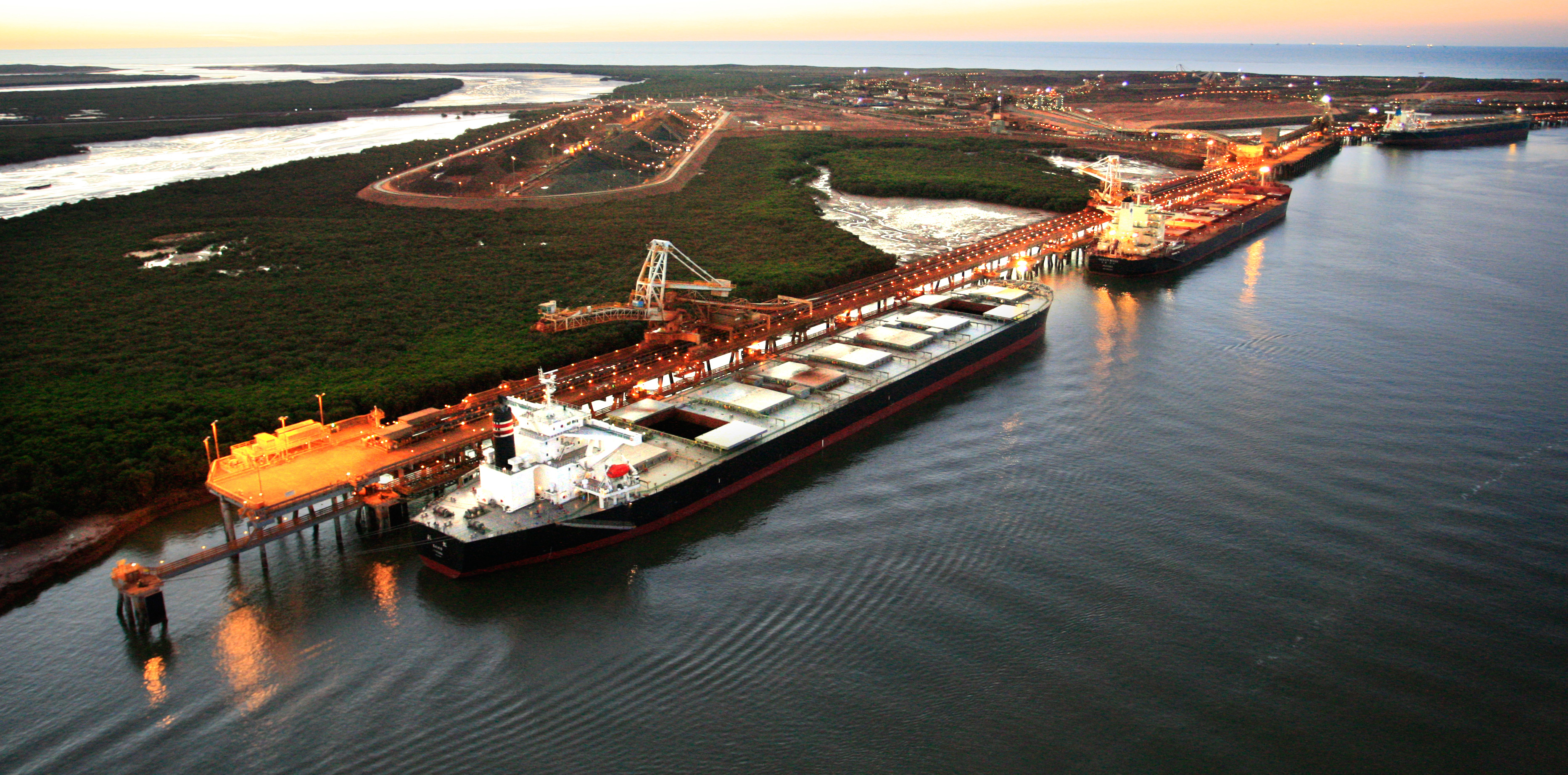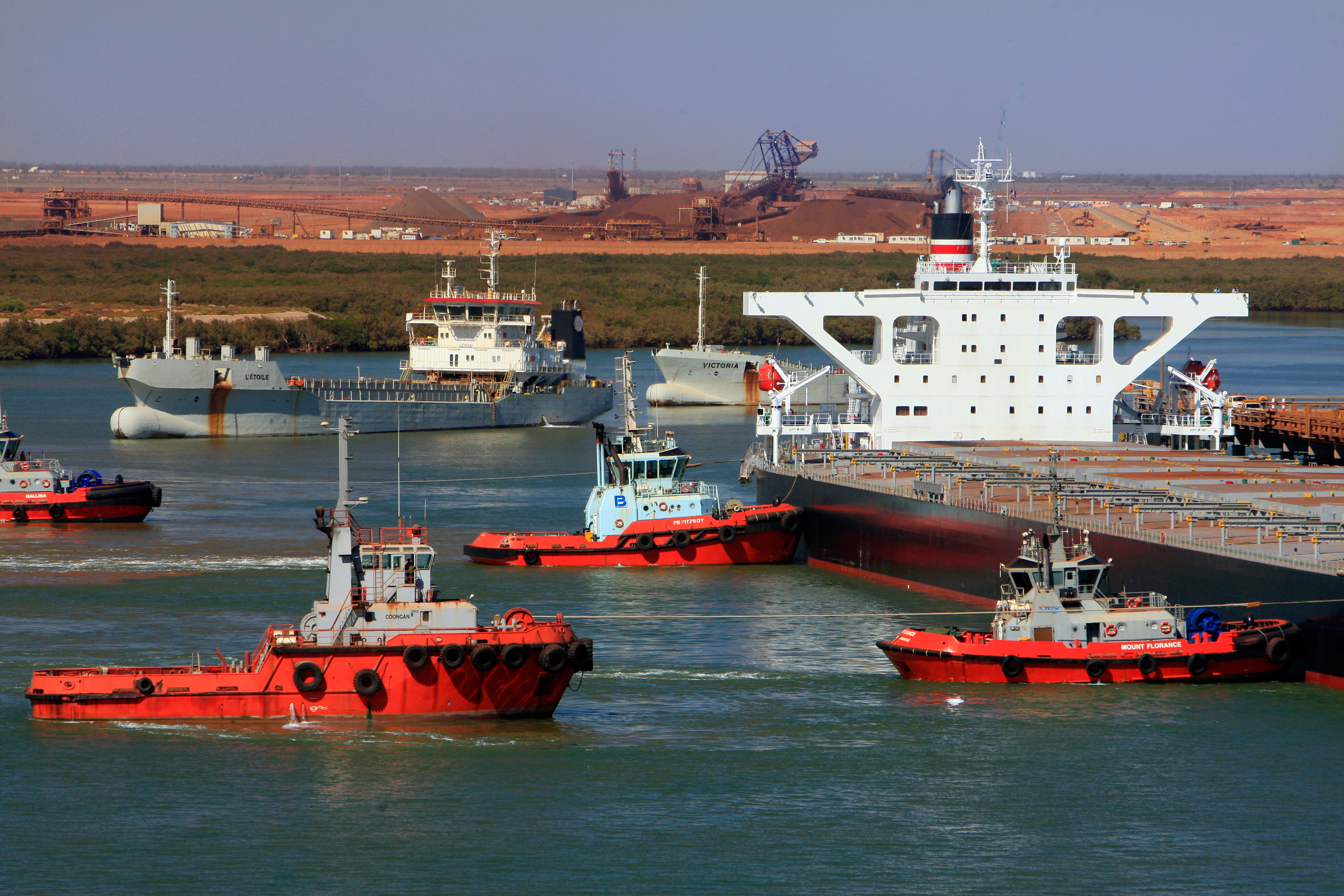This website uses cookies, including third party ones, to allow for analysis of how people use our website in order to improve your experience and our services. By continuing to use our website, you agree to the use of such cookies. Click here for more information on our and .
The Port Hedland Port Authority (PHPA) is of vital strategic importance for iron ore producers in the Pilbara. In the lead up to the Global Iron Ore & Steel Forecast Conference, we had the chance to speak to CEO Roger Johnston about the ports expansion plans to accommodate future growth and got an update on projects currently under way.
July has been a month of record announcements for PHPA. You were able to report a 17% increase in tonnage throughput for the 2012/13 financial year compared to the previous year. Forecasts are predicting further growth. How is the port preparing to facilitate and accommodate projected growth?
 Roger Johnston: In order to meet the projected growth in both import and export volumes, the PHPA has implemented a number of strategies to facilitate the development of port infrastructure to support proponent developments and expand general cargo capacity at the port. These strategies include:
Roger Johnston: In order to meet the projected growth in both import and export volumes, the PHPA has implemented a number of strategies to facilitate the development of port infrastructure to support proponent developments and expand general cargo capacity at the port. These strategies include:
- The development of Lumsden Point, to meet the long-term growth of general cargo handling as a result of the expanding iron ore and related industries in the East Pilbara;
- The development of Stockyard 2 at the PHPA’s Utah Point Multi-User Bulk Export Facility. This development will increase the export throughput capacity at Utah Point to approximately 18 million tonnes (mt);
- The progress of the PHPA Boodarie Stockyards land, designed to accommodate the needs of existing and future proponents exporting from the inner harbour and planned Multi-User Outer Harbour (MUOH) Facility. This strategic land area will facilitate the development of proposed transport corridors including roads, rail and railway loops to stockpiles and at least 200 million tonnes per annum (mtpa) of trade for the planned MUOH facility; and
- Planning for a MUOH Facility to accommodate trade growth of bulk exports, including cargo planned through the Boodarie strategic industrial estate.
Can you give us an update on the status of the export development projects on the Outer Harbour? What are the plans? How far has the project progressed so far?
 Roger Johnston: The PHPA continues to plan for the MUOH facility which will provide additional port capacity to facilitate expected growth in bulk exports. This includes preparing a MUOH Master Plan and developing the Boodarie stockyards to accommodate existing and future demand. In the coming year, key stakeholders will be consulted to gain feedback before the facility is adopted into the PHPA’s Port Master Plan.
Roger Johnston: The PHPA continues to plan for the MUOH facility which will provide additional port capacity to facilitate expected growth in bulk exports. This includes preparing a MUOH Master Plan and developing the Boodarie stockyards to accommodate existing and future demand. In the coming year, key stakeholders will be consulted to gain feedback before the facility is adopted into the PHPA’s Port Master Plan.
How has the development of Lumsden Point progressed so far?
Roger Johnston: PHPA is currently progressing the development of additional general cargo handling facilities/berths adjacent to the proposed Pilbara Fabrication & Services Common Use Facility (PFSCUF), at Lumsden Point. In late 2012, the PHPA commenced a market sounding exercise to examine market requirement for the facility and the proposed framework for its development. Since then, the project has progressed, with the PHPA now optimising the project concept to allow for larger vessels and channel access for the majority of the tidal window. Environmental approvals are progressing and submission is scheduled for early 2014.
In economically challenging times, a lot of mining operators are looking into driving efficiencies and streamlining operations. What role can export infrastructure play in making mining operations more efficient and cost-effective?
Roger Johnston: The PHPA has developed a number of strategies to help support exporters (mining operations) operate more efficiently and cost-effectively. These include:
- Promoting the use of larger, draft efficient ships such as the Wozmax class vessels (purpose-designed for Western Australia’s Pilbara ports) to increase throughput;
- The commissioning of the PHPA’s Utah Facility in 2010, which was established to meet the resource’s industry need for expanded port facilities, and provide junior miners access to port facilities and export markets. Additional export capacity is also now being realised through the deleopment of Stockyard 2;
- Utah Facility is also the first Australian berth in a bulk port to install the Cavotec Mooring System, an automated mooring system designed to improve safety and reduce vessel capture, moor and release times by up to 2 ½ hours per vessel;
- Implementing latest technology to optimise port operations, including:
- Latest dispatch technology in the Shipping Control Tower;
- Dynamic Under Keel Clearance (DUKC) system to safely maximise vessel drafts and optimise tidal windows;
- New Geographic Information System (GIS) technology; and
- Portable Pilot Units, that help marine pilots to safely navigate in and out of harbour.
- New cape size berths in the inner harbour have become operational in recent years, including two BHP berths (Harriet Point) in 2011, Fortescue Metals Group Anderson Point Berth 3 (AP3) which was commissioned in 2011 and AP4 commissioned in 2012.
- The PHPA also identified under-utilised capacity at the port following a whole-of-port review last year. As a result – the Port developed D class protocols – which allow any shipper to put thru spot tonnage over and above allocations.
Port Hedland Port Authority is very involved in the local community. Do you see growing importance for effective community relations when it comes to sustainable project delivery and day-to-day operations?
 Roger Johnston: The PHPA has established a positive working relationship with the local Port Hedland community, and in particular, the Town of Port Hedland and the Care for Hedland group. The PHPA also participates in a range of community events which enable the community to interact with port staff, and better understand the port and its operations. The PHPA values the importance of effective and positive community relations in order to help the local community better understand the ports operations.
Roger Johnston: The PHPA has established a positive working relationship with the local Port Hedland community, and in particular, the Town of Port Hedland and the Care for Hedland group. The PHPA also participates in a range of community events which enable the community to interact with port staff, and better understand the port and its operations. The PHPA values the importance of effective and positive community relations in order to help the local community better understand the ports operations.
During the 2012-13 financial year, the PHPA facilitated five cruise ship visits, including one of the world’s largest cruise ships, the Voyager of the Seas. The cruise ship visits not only provide local businesses and the Town of Port Hedland an opportunity to interact with visitors to Port Hedland and bringing with it economic benefits, but it also provide the PHPA the opportunity to showcase its unique operations to the wider general public.
The PHPA also plays a leading role in the Port Hedland Industry Council, which works to monitor and manage any impacts of dust generated from local industries.
You will be speaking at the Global Iron Ore & Steel Forecast Conference. What discussions would you like to have with industry peers at the event?
Roger Johnston: Any discussion about future demand is useful.

